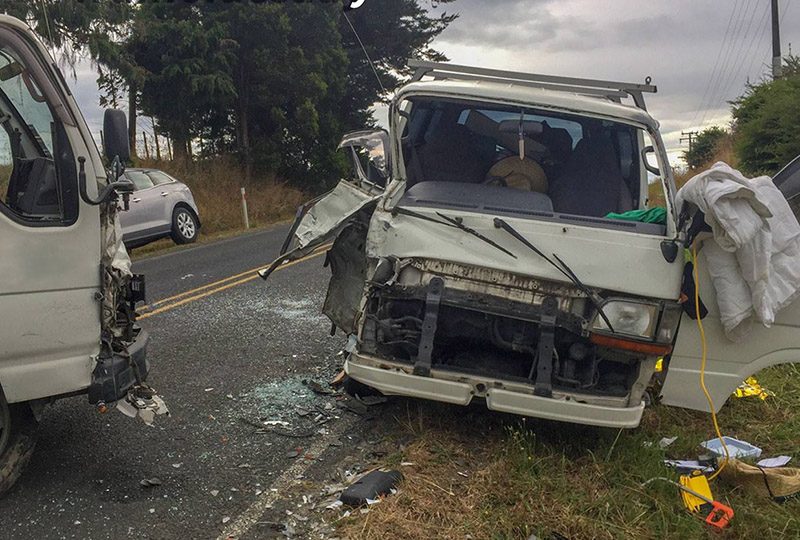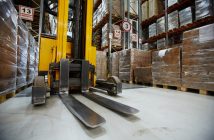Sometimes the biggest threat to people in a head-on crash is all the things that are behind them and cargo barriers are a good way of preventing an already bad situation from getting much worse

Tools went flying when these two vans collided on the outskirts of Hamilton in February though there was no serious injury. Photo: NZ Police
A collision in Hamilton in early February between two vans saw Waikato police warning tradies that unsecured tools and cargo can become painful, if not deadly missiles, in an accident.
In a Facebook posting about the crash, pictured below, the police said wood and tools came flying out of the van as it collided with another vehicle that had crossed the centre line.
“Upon impact the contents of the Toyota Hiace (including tools) have come flying forwards, towards the driver and his passenger.
“If you are a tradie or own a company this may be an opportunity to consider any improvements that you can make (in case of an emergency).”
The van driver later told The New Zealand Herald that it wasn’t the wood that broke his windscreen but accepted that several tools had gone rogue. He said four tools – a clamp, a glue gun, hack saw and multi box – flew out the window but they were the only things that were unsecured in the van.
Construction safety training organisation Site Safe says putting a barrier between people and objects makes good sense, particularly for tradies and construction workers.
The gravitational force (g-force) on people and objects during collisions at about the 50kmh mark are usually around 20-25 times normal. So, for a brief instant, even a 1kg water bottle will have the force of 20-25 kgs as it flies forward until it hits the dashboard, the windscreen, or the back of someone’s head.
Otaki St. John ambulance officer Trevor Hunter has dealt with several vehicle accidents involving unsecured items including, tragically, two fatal ones. Another one, he says, was much luckier for the occupants. They were in a head-on crash which saw a large oxy acetylene cylinder fly out from the back of the van, shooting between them and burying itself in the dashboard.
Another first responder from Otago recalls a call-out to where a vehicle had rolled. She says it wasn’t the actual rolling that killed a person in the car, it was a combination of a loose tool box, a chainsaw, and other heavy items.
There are several ways to minimise the risk from such things happening. Keeping them secure is one, keeping tools and materials separated from people via a cargo barrier is another. Of the current range of cargo barriers that are available, the range from Australia’s Milford Industries is one of those that meets the NZS4034 standard for cargo barriers.
Properly fitted barriers, as well as protecting people from fast-moving objects, may also offer extra protection if the vehicle rolls.
Site Safe also recommends that liquids are securely stowed in correct bottle containers and where possible, fuel should be in a separate trailer.
For more information go to: www.sitesafe.org.nz




